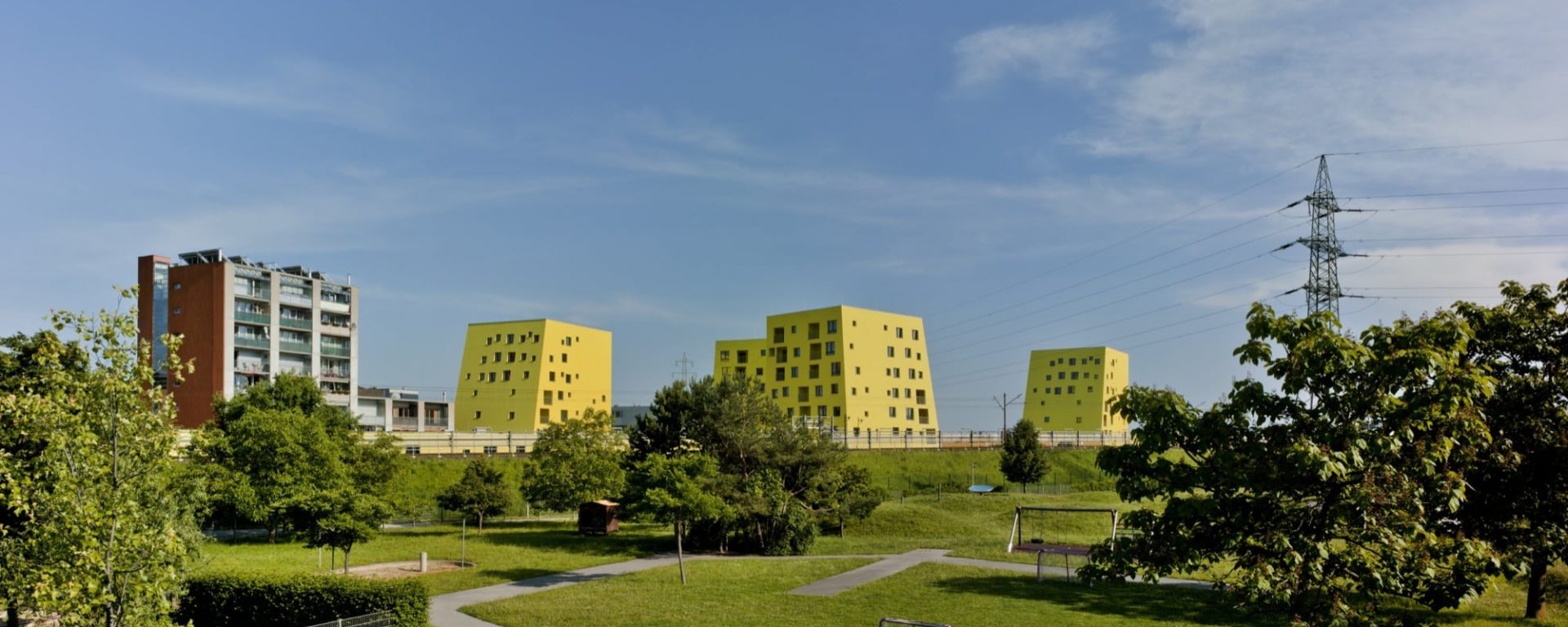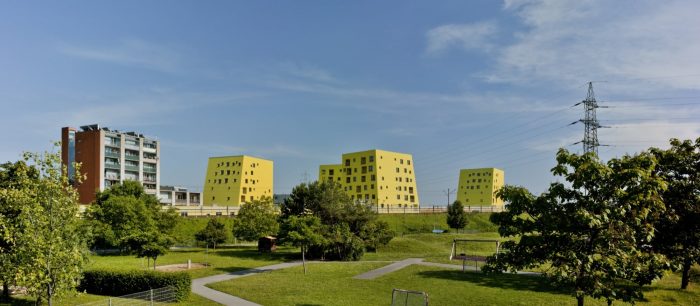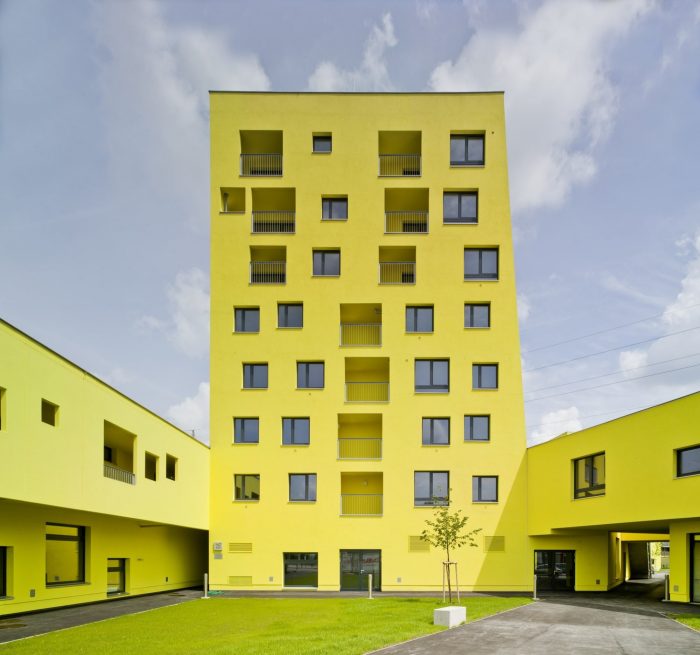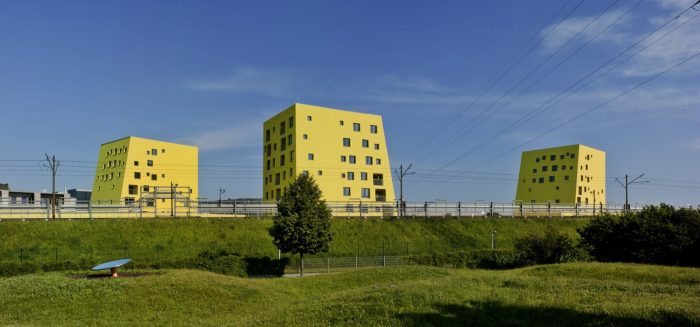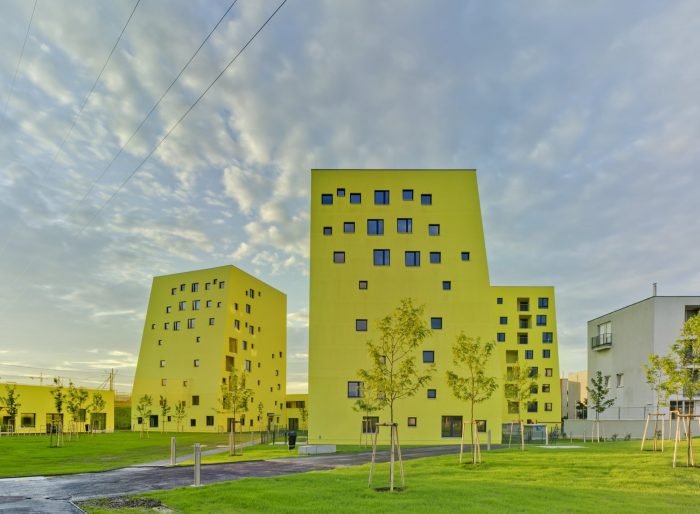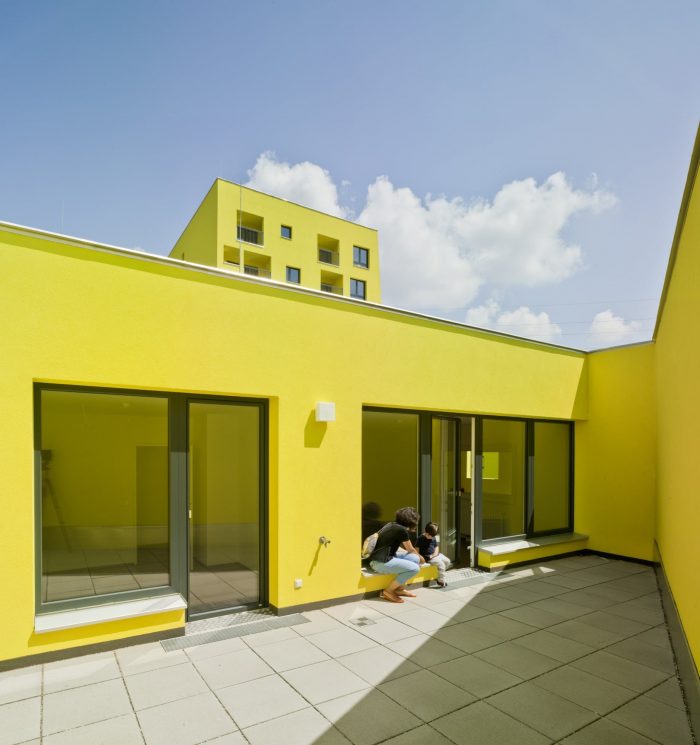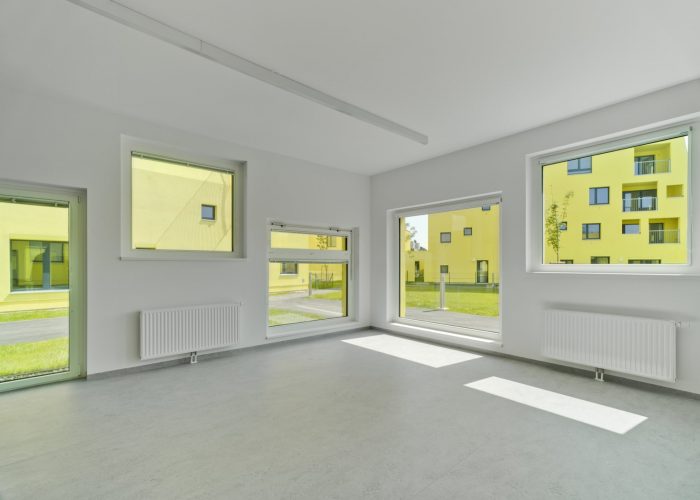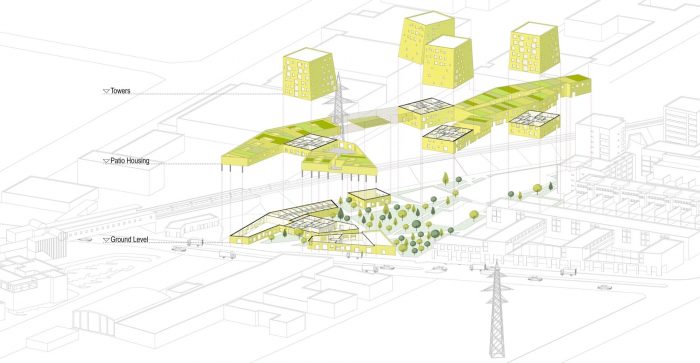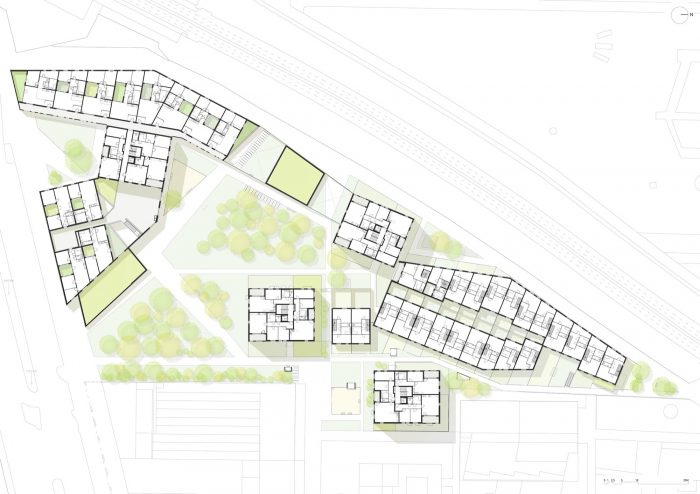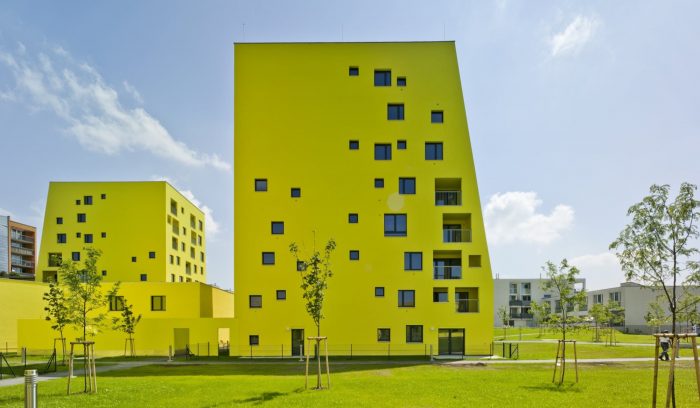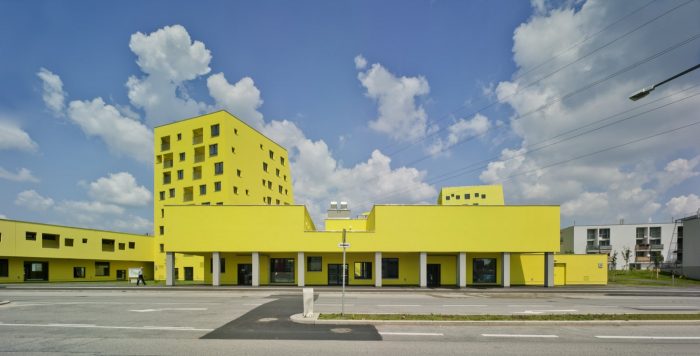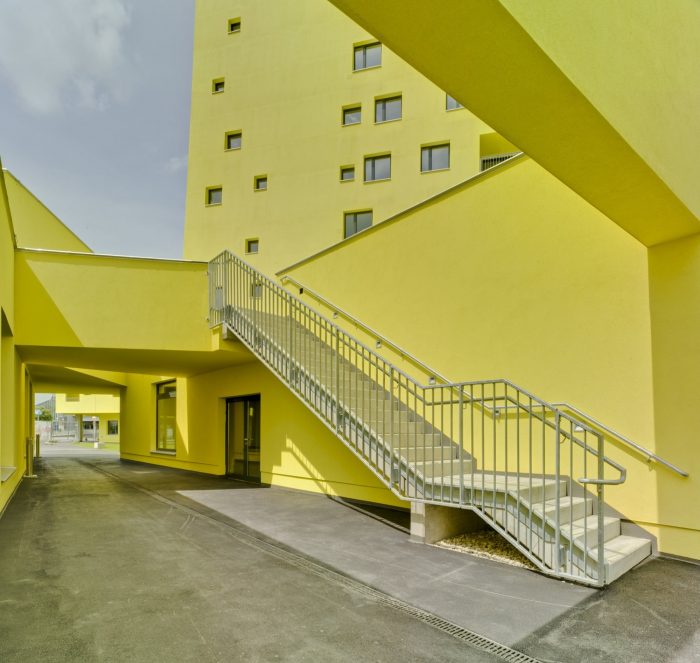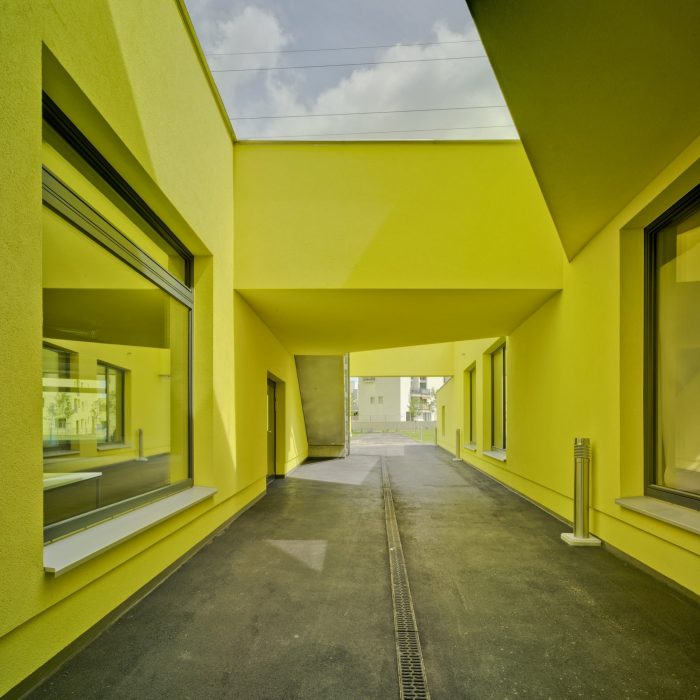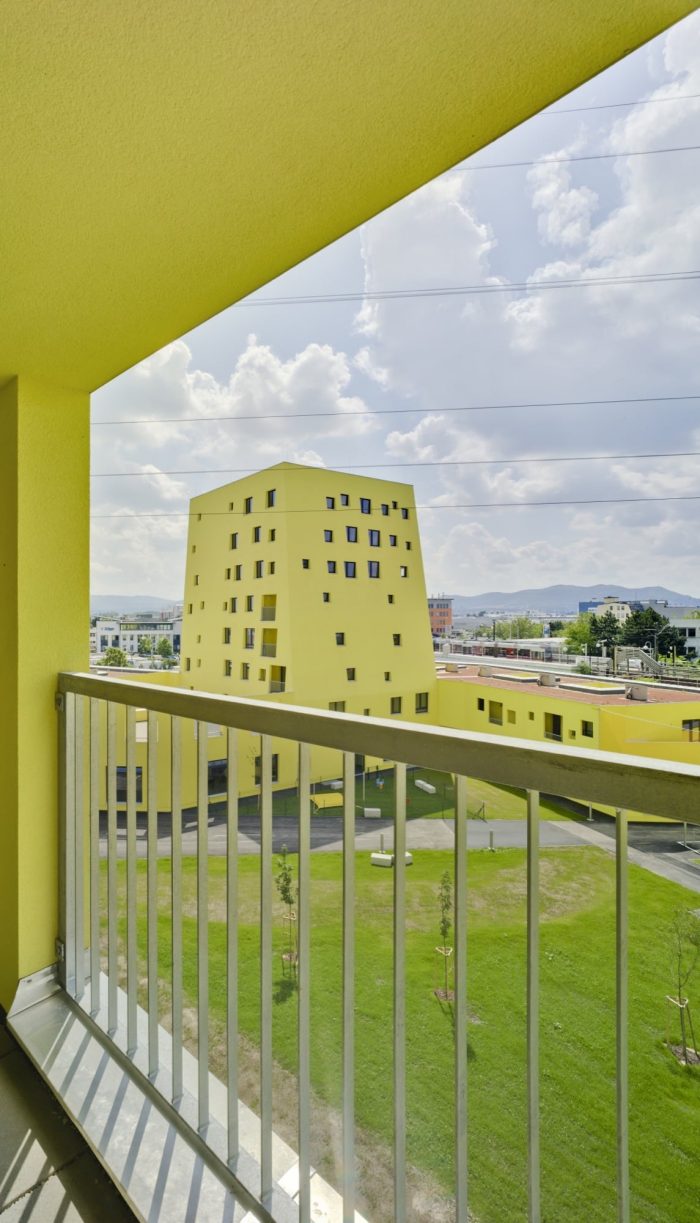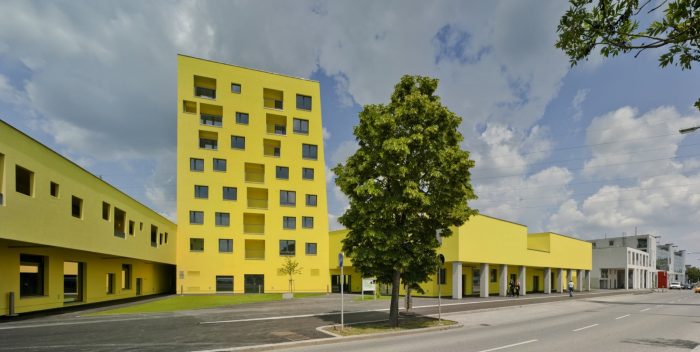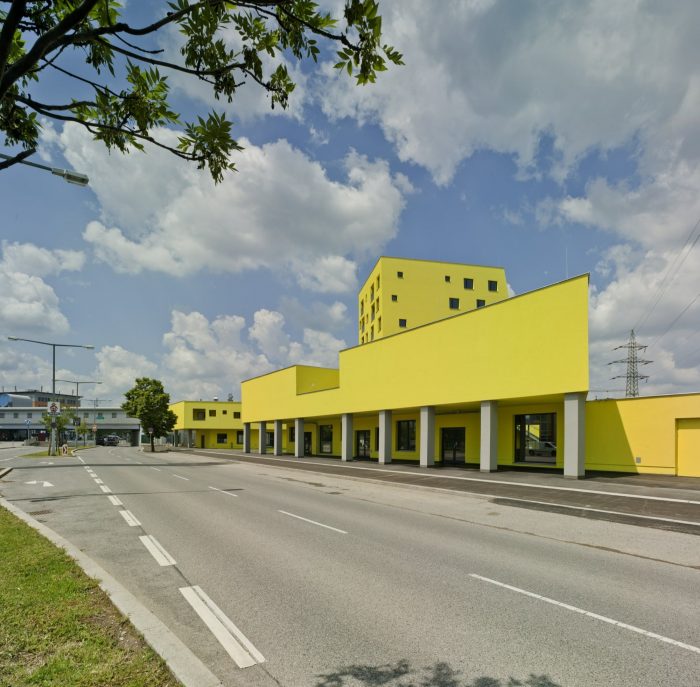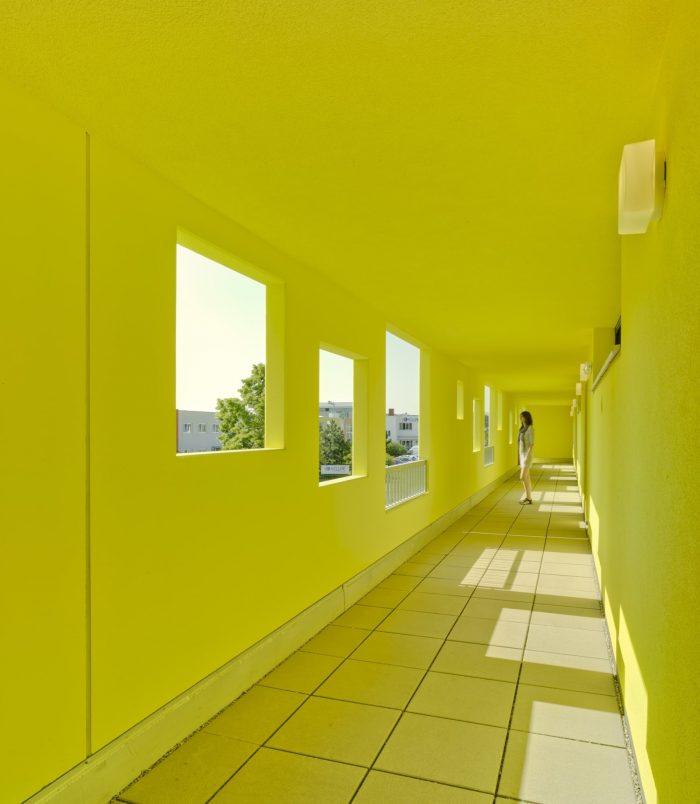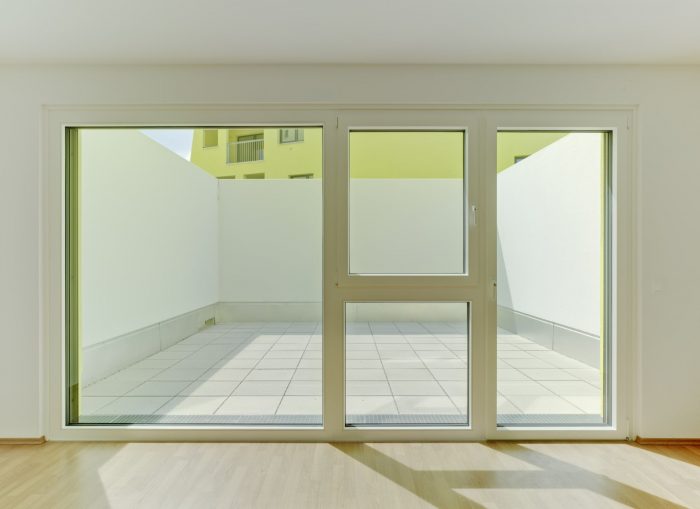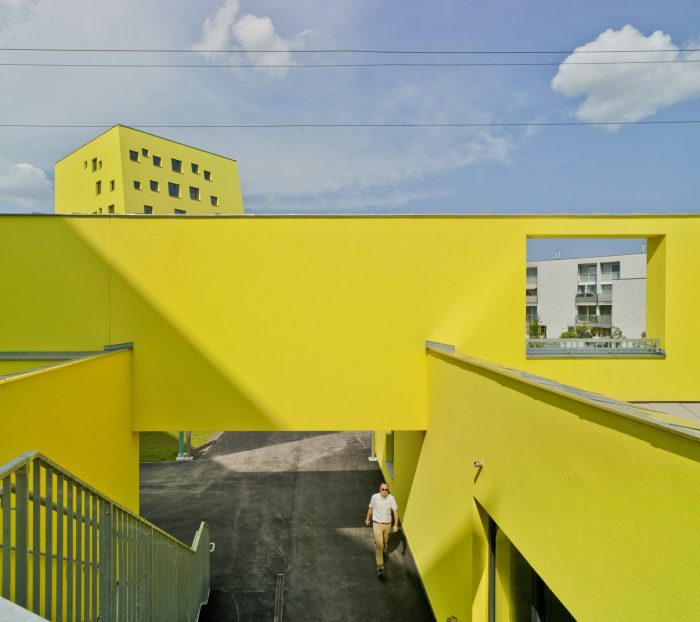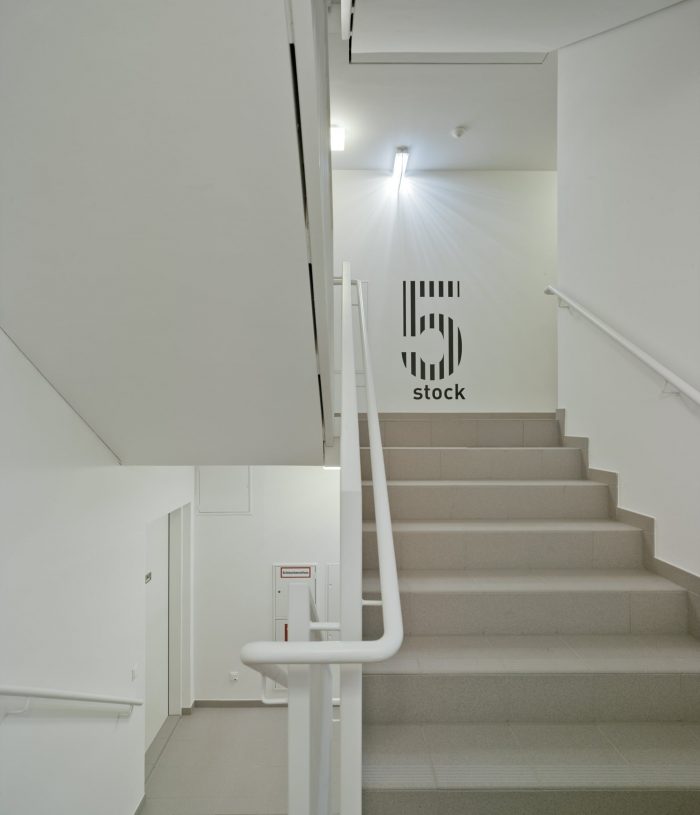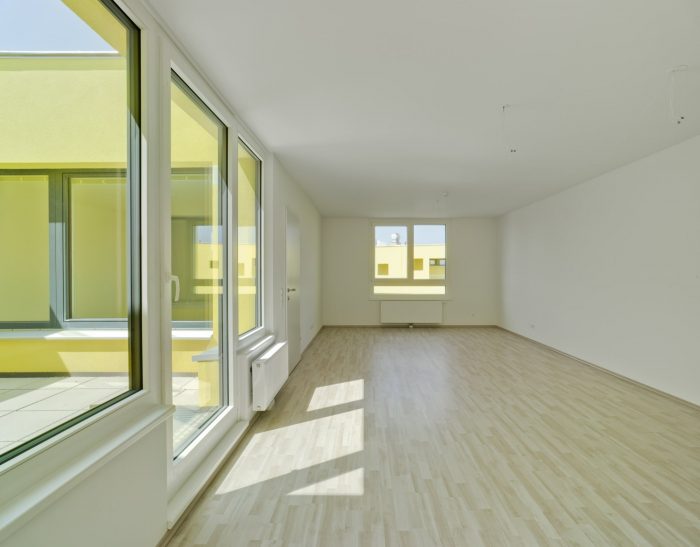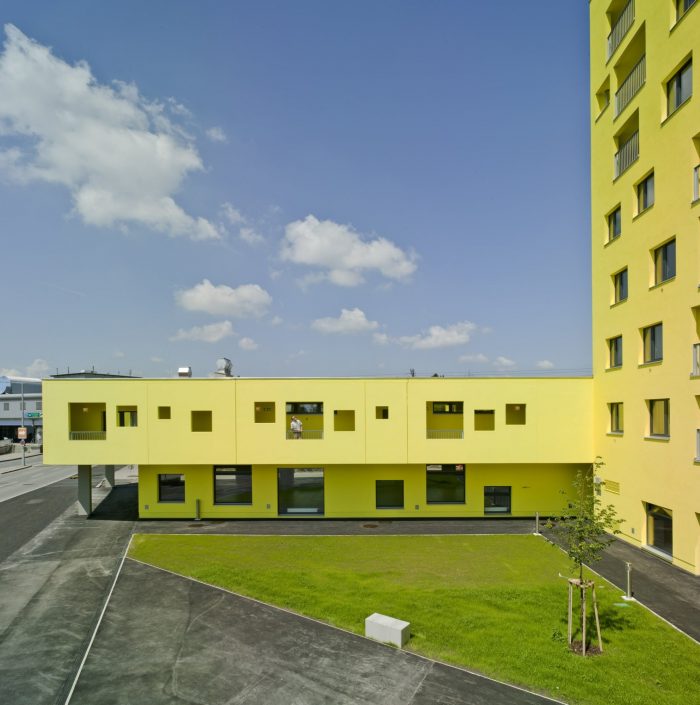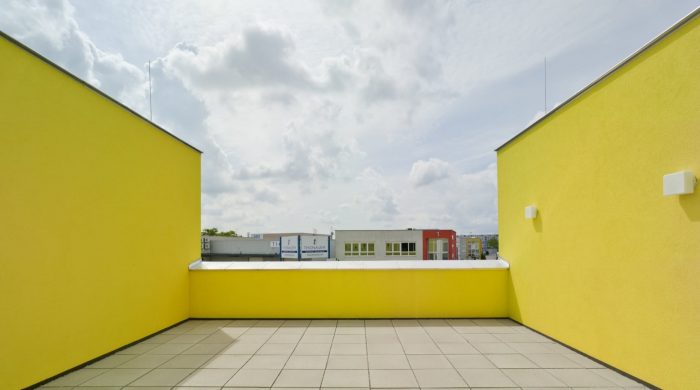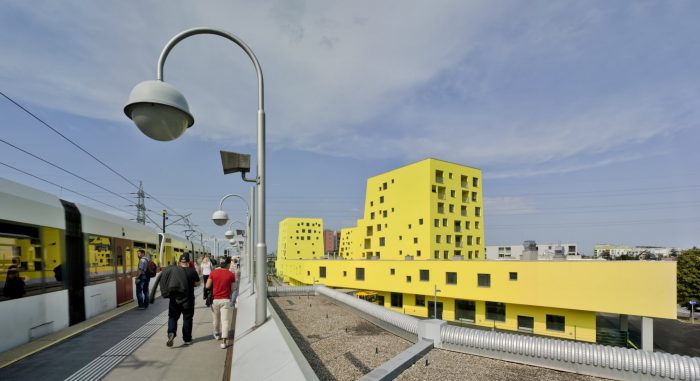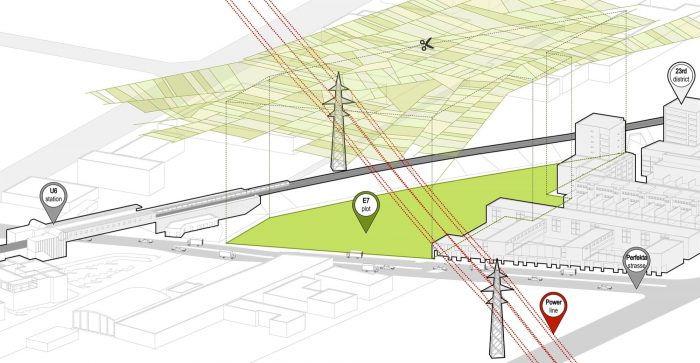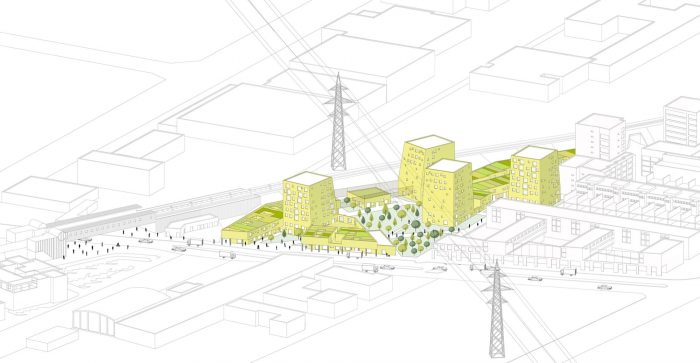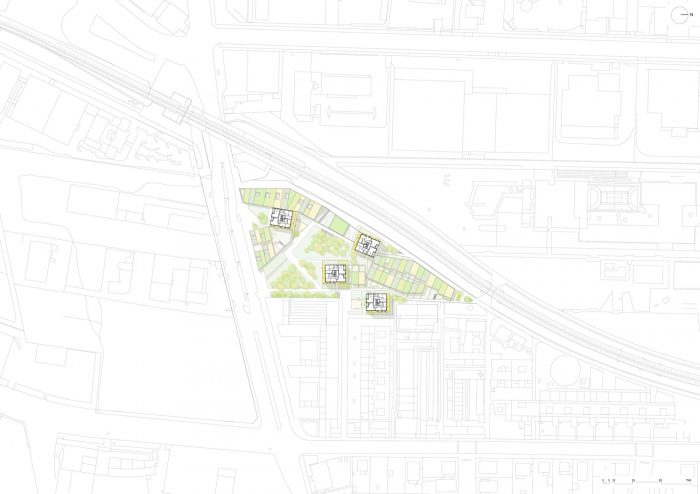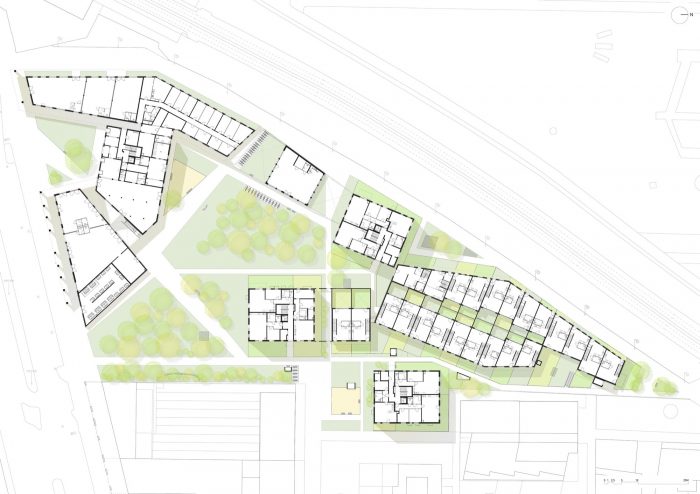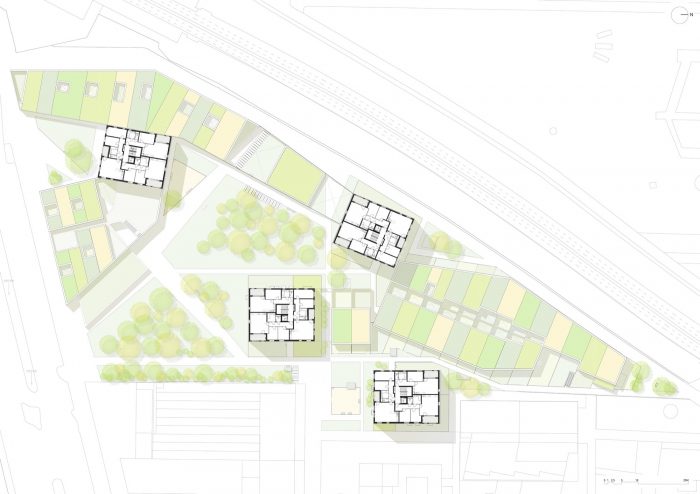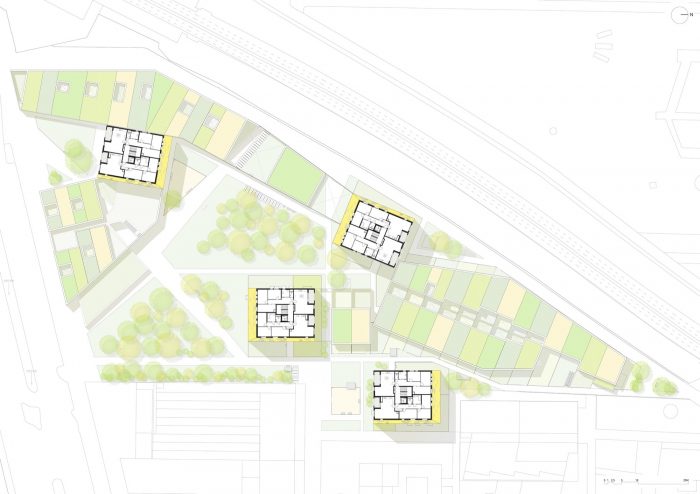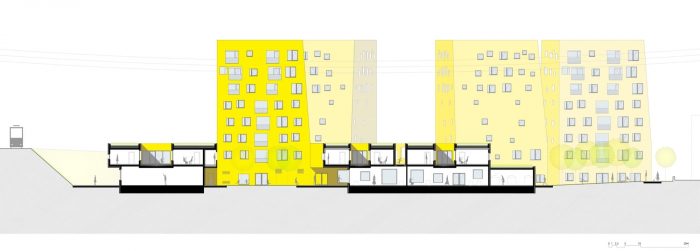“与基础设施打交道 “是Europan 7的组织者将位于维也纳的场地归入的主题领域;事实上,它可能是一种典型的案例研究:一块三角形的土地,位于城市的郊区,被一条繁忙的交通道路、一条高架地下线和一条中压电力线所包围……还有什么?事实上,这是典型的由周围基础设施的痕迹产生的 “遗留 “地面。在我们之前到来的社会住房开发商已经建造了这个区域,但他们留下了 “剩余”,等待第二次机会。这个 “休息 “不仅仅是一个房地产的机会,也是一个在一个没有明确代表形象的城市边缘地区产生新的城市生活的机会。Perfektastrasse 58号地块充满了机会,等待被发现……认识到这些机会是项目的开始。 由于地铁线的能见度,该地块已经成为大量维也纳人前往市中心的城市形象的一部分,所以该项目必须与它一起运作。靠近Perfektastrasse地铁站,使该地块成为增加住房密度的合适地点,按照交通导向发展的理论,将越来越多的人和生活带到该地区。该地块有条件演变成一个新的城市公共空间,一个通往U6车站的交通场所,但也是一个庆祝日常生活的公共空间。地铁高架的另一侧没有建筑物,这使得从该地块到维也纳的景观有了很好的视野,而该地块离地面有8米高。最后,在等待 “第二次机会 “的同时,该地块的绿色状况给人一种形象,但主要是一种生物多样性,可以而且应该被保留下来。
“Dealing with Infrastructures” was the title of the thematic area under which the organizers of Europan 7 placed the site located in Vienna; in fact it was probably a kind of paradigmatic case study: a triangular plot, placed in the outskirts of the city, surrounded by a heavy traffic way, an elevated underground line and crossed by a middle tension power line… anything else? Actually it was the typical “leftover” ground generated by the trace of the infrastructures surrounding it. The social housing developers that arrived before us had already built the area, but they left the “rest” waiting for a second opportunity. This “rest” was not just a real estate opportunity, but an opportunity to generate new urban life in a neighborhood placed in the periphery of the city without a clear representative image. The Perfektastrasse 58 site was full of opportunities waiting to be discovered… to recognize them was the beginning of the project. Due to the visibility given by the underground line, the plot was already part of the image of the city for a huge number of Viennese people in their way to the city center, so the project had to operate with it. Being close to Perfektastrasse U-bahn station pointed the plot as a proper place to increase the housing density, bringing more and more people and life into the area, following the theories proposed by the Transit Oriented Development. The plot had conditions to evolve into a new urban public space, a transit place in the way to the U6 station, but also a public space where celebrate collectively the everyday life. The absence of buildings on the other side of the elevated underground line allowed excellent views from the site to the landscape of Vienna when placed 8 meter high from the ground level. By last, the green condition of the plot while waiting for a “second opportunity”, gave an image to the context, but mainly a biodiversity, that could and should be preserved.
该项目利用这些机会,采用了两个主要的建筑策略:创建3个不同的层次,并将景观导入地块。
The project took advantage from these opportunities applying two main architectural strategies: the creation of 3 different levels and the importation of a landscape into the plot.
在低层,该项目提出了一个明确的公共使命,不同的公共用途被放置在商业活动的周围。一个改善邻居和行人之间的社会关系的地方,在他们去地下车站的路上。在这一层的正上方,第二层创造了一种厚厚的屋顶,不同的天井房位于其中(我们为维也纳提出的地中海类型学),这些天井房成为新绿地北侧的两层单位,在电力线的痕迹下获得;为那些希望靠近地面生活的人提供了一个通过天井注视天空的地方。最后,对于那些希望住在高处的人来说,四座塔楼的轮廓远离电力线,观察城市景观。
In the lower level the project presents a clear public vocation where different common uses are placed surrounded by commercial activities. A place where improve social relations between neighbors and pedestrians in their way to the underground stop. Right above that level, a second one creates a kind of thick roof where different patio houses are located (a Mediterranean Typology that we propose for Vienna), that become two-story units on the Northern side of the new green area obtained under the trace of the power line; a place for those who wish to live close to the ground staring at the sky through their patios. And finally for those who wish to live in the heights, four towers with a profile that moves away from the power line, observe the city landscape.
关于规划配置,该项目暗示了维也纳市周围的农田(休耕地)的结构,作为一种正式的战略,能够承担上述评论的多种边界条件。经过13年的工作,这个在一开始可能被认为是形式上的策略,导致了一个非常具有操作性的策略,使项目能够承担多种规范性、程序性和构成性的变化。此外,对农田的影射不仅仅是一个修辞问题,而是一个生产性的问题,通过在庭院住房的屋顶上创建果园,由邻居来种植……尽管如此,2003年谈论可食用或生产性城市的现象也许还为时过早,所以在最后,密集的绿色屋顶只是作为增加环境可持续性的措施来建造。
Concerning the plan configuration, the project alludes to the structure of the farmlands (fallow land) surrounding the city of Vienna, as a formal strategy capable to assume the multiple border conditions commented above. After 13 years of work, the strategy that in a beginning could have been considered in a formal way, resulted in an extremely operative one, allowing the project to assume multiple normative, programmatic and compositional changes. In addition, the allusion to the farmlands was not just a rhetoric question but a productive one, by the creation of orchards in the roofs of the patio housing to be cultivated by the neighbors… nevertheless 2003 was maybe too early to talk about edible or productive cities phenomena, so at the end intensive green roofs were built just as a measure to increase the environmental sustainability.
最后,该项目承担了成为相当多的维也纳人的城市形象的一部分的条件(由于地块的可见性),并重新解释了维也纳的文化条件:油漆石膏外墙。其结果是通过增加这些彩色外墙的色度,为第23区创造一个可识别的新形象…维也纳柠檬。
Finally the project assumed the condition of being part of the city image for a considerable number of Viennese people (due to the visibility of the plot) and reinterprets a cultural condition from Vienna: the painted plaster façades. The result was to create a recognizable new image for the 23rd district by increasing the chromatic intensity of these colored façades… the Vienna lemons.
Architects: PLAYstudio, YES studio
Area : 5266 m²
Year : 2016
Photographs :David Frutos
Project Manager : Ronald Mischek ZT, Martin Lehner, Susan Glöckner
Constructor : Strabag AG Hoch- und Ingenieurbau
Design : YES studio + PLAYstudio
Structural : Ronald Mischek ZT, Michael Härtel
City : Wien
Country : Austria

